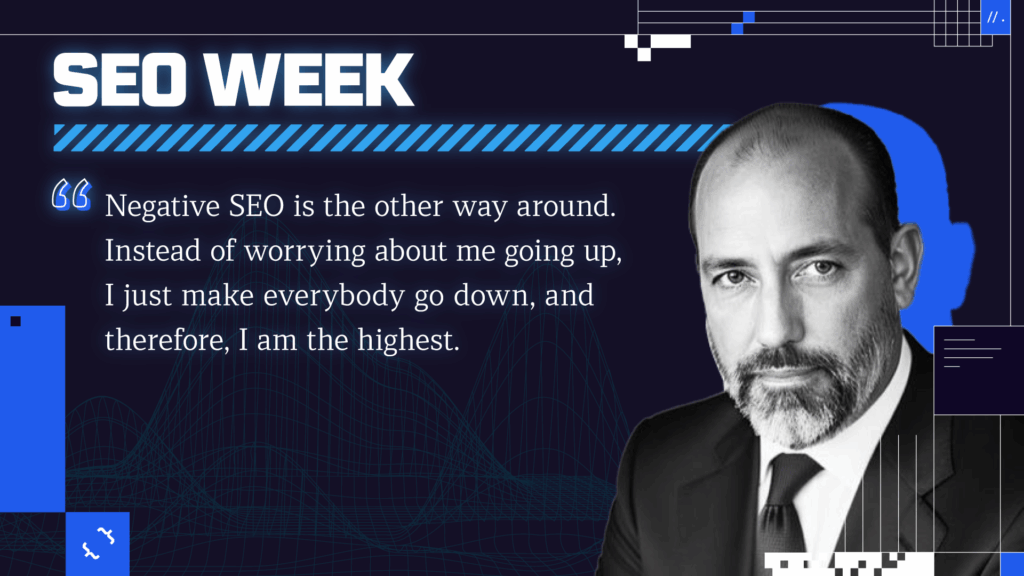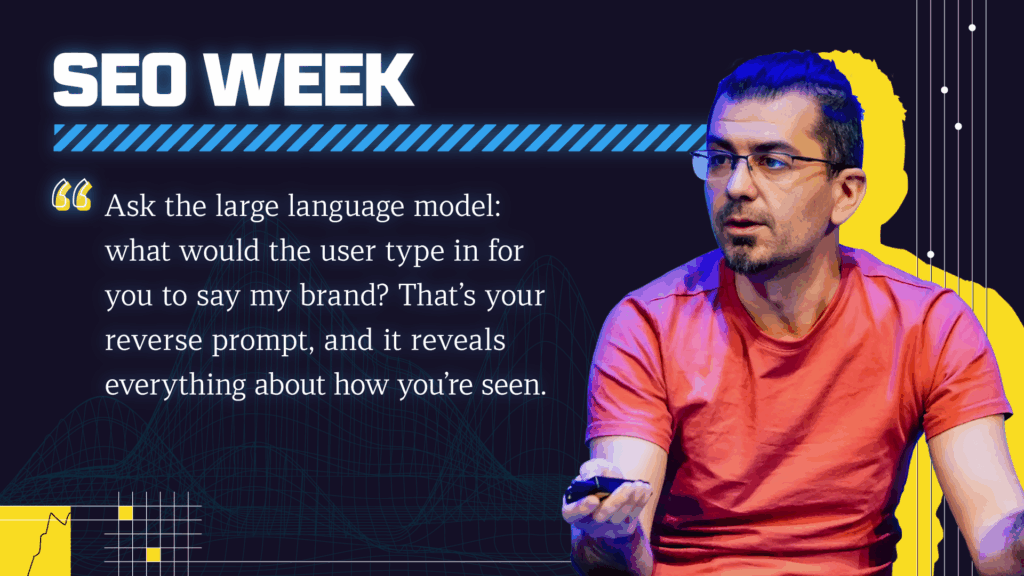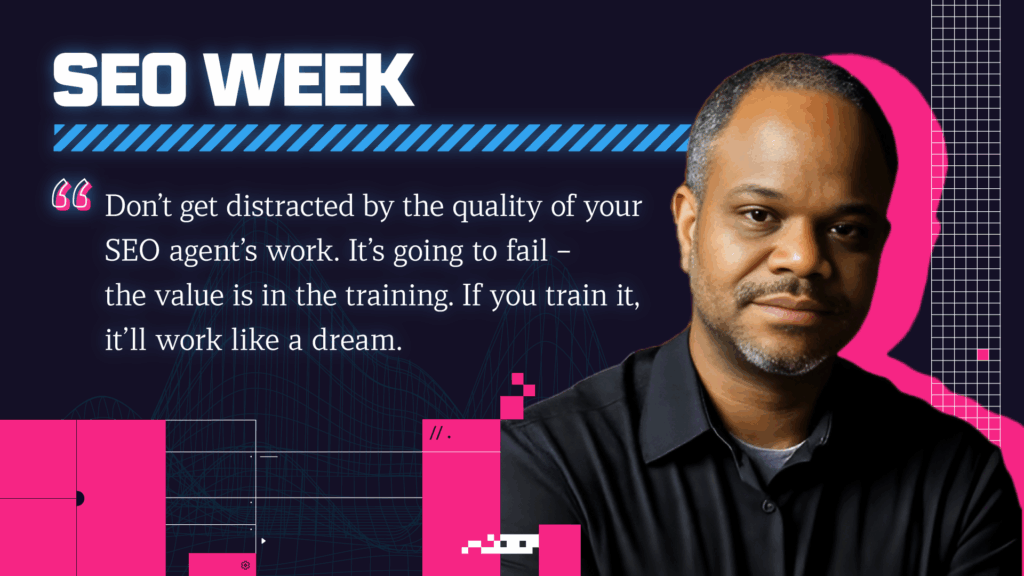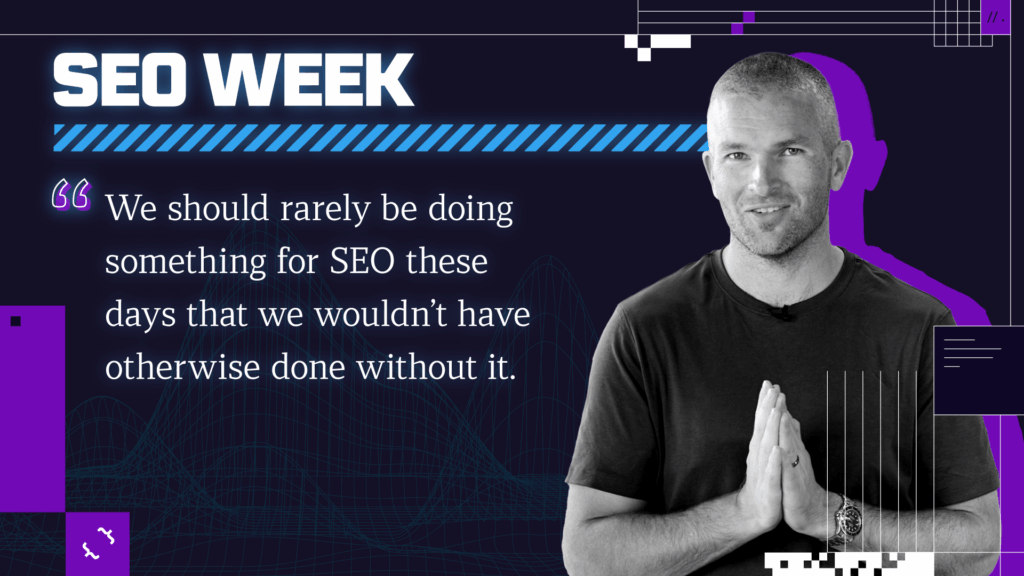At iPullRank, we love sharing new ideas with our fellow marketers and professionals who dare to think beyond the basics. For this purpose, we began the Rank UP marketing industry event to bring together some of the best marketing minds in the industry for conference-quality presentations, panel discussions, and networking. For our last Rank UP event, we took over RPM Underground with our friends from Searchmetrics and shed some light on the future of search!
Here’s our recap of the presentations, Jordan Koene’s (CEO, Searchmetrics) full presentation, panel discussions, and the QA session with experts including Mike King (Managing Director, iPullRank), Christopher Hart (Director of Revenue, iPullRank), Taylor Cahill (Sr. Content Strategist, iPullRank), and Clinton Byrd (Sr. Marketing Manager). We also pulled more experts from the audience who were bold enough to participate since we do like to stir things up a bit.
Presentation: Jordan Koene and the “The New World” of Digital
“Trends show that foot traffic in-stores is decreasing while online traffic is increasing. Many public retail companies are failing because they are not keeping up with these trends.”

Q1: Why are so many public retail companies filing for bankruptcy?
“Consumers should be able to go online to find the right size and color, where it is in stock, shipped or picked up in a store.”
Jordan Koene, CEO of Searchmetrics
Jordan referenced Diesel, Shopko, Charlotte Russe, and in one case referenced Payless’ search visibility to highlight these companies’ diminishing search performance and their need for an improved omnichannel experience.
Case in point, Payless had great brand awareness but their online experience was lacking. On the other hand, their competitor, Zappos, has a listing of a wide variety of shoes and provides free shipping and returns. Zappos’ business model has been more successful because people can instantly check their selections, get it, and return it for free. It’s easy. It’s seamless.
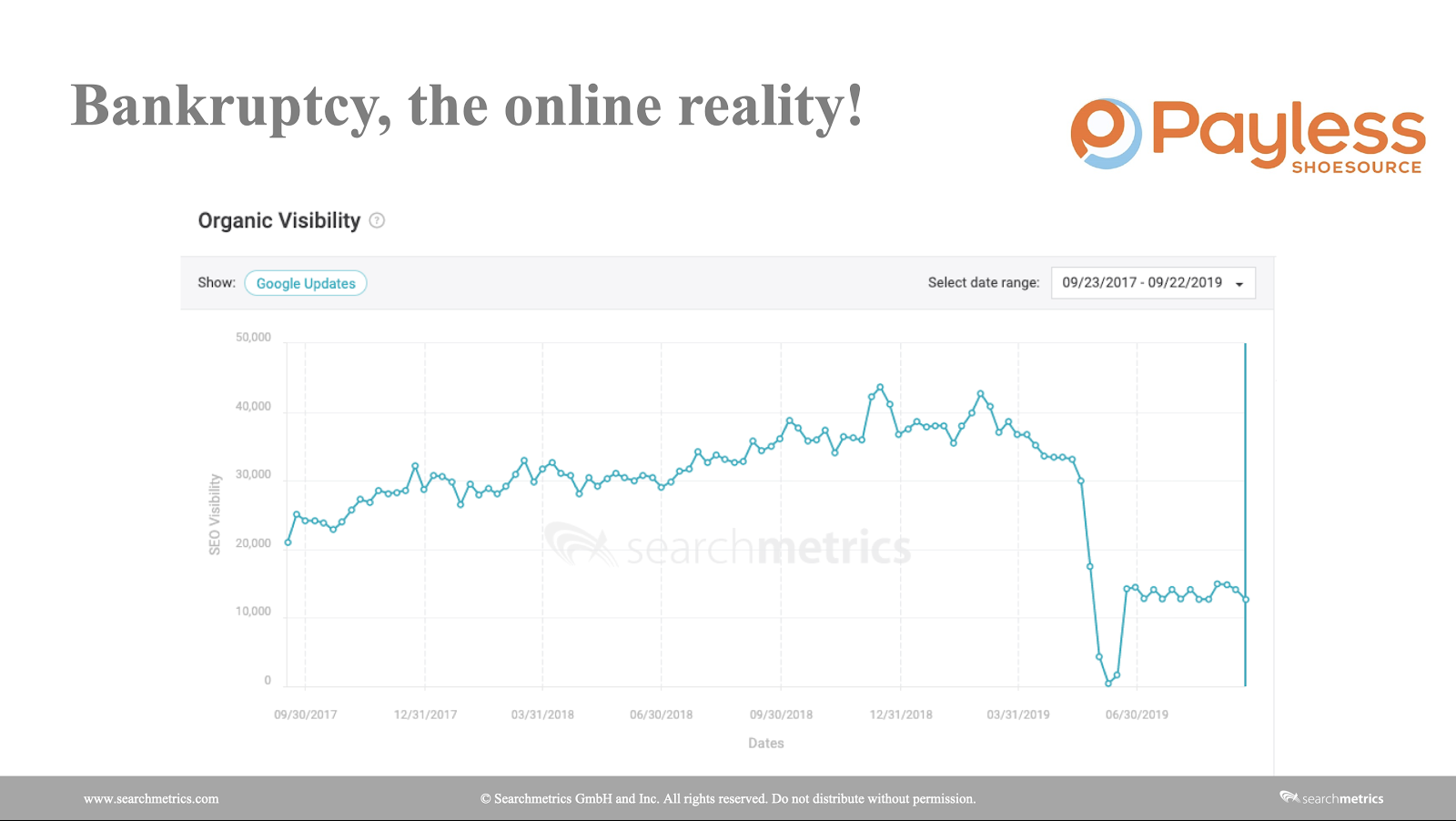
Q2: How can we look at data from a market level?
“(We, as marketers,) must transform complicated data into tangible insights that can be of value to businesses…Most of us focus on working faster, better, and harder when it comes to ‘understanding data’, but have no clear direction on how to actually do that.”
Jordan Koene, CEO of Searchmetrics
Jordan raised concerns that a lot of SEOs and data analysts out there are not fully understanding or leveraging data. He recommends a few steps to guide us in the right direction, with examples of how Searchmetrics categorizes keywords and data to conclude what consumers are really looking for using top brands Nike, Adidas, and UnderArmour as examples.

Jordan Koene’s Steps to Understanding Your Analytics Data
- Split the keywords into categories. Take all of the ‘running-related keywords that exist in any performing keyword tool, such as the Searchmetrics platform, and categorize them, in this case, footwear and apparel.
- Look at the data collected from a macro level.: “There are obvious conclusions that you can gather from looking at macro trends, and from this particular example, it is obvious that the footwear market is much larger than the apparel market.”
- Gather insights from the data collected: According to this analysis, if you’re an investor looking into the sportswear market, then you should consider the footwear market since the YoY growth of the footwear market is 4 times the pace of the apparel market.
- Analyze the data and insights at a micro-level: People often look at seasonal trends, thinking that they have seasonality understood fully and that most things are sold in Q4 during the holiday seasons. That may be true with the apparel market, but the data shows that people tend to buy more footwear in Q1 and Q2, the spring season when people are outside running.
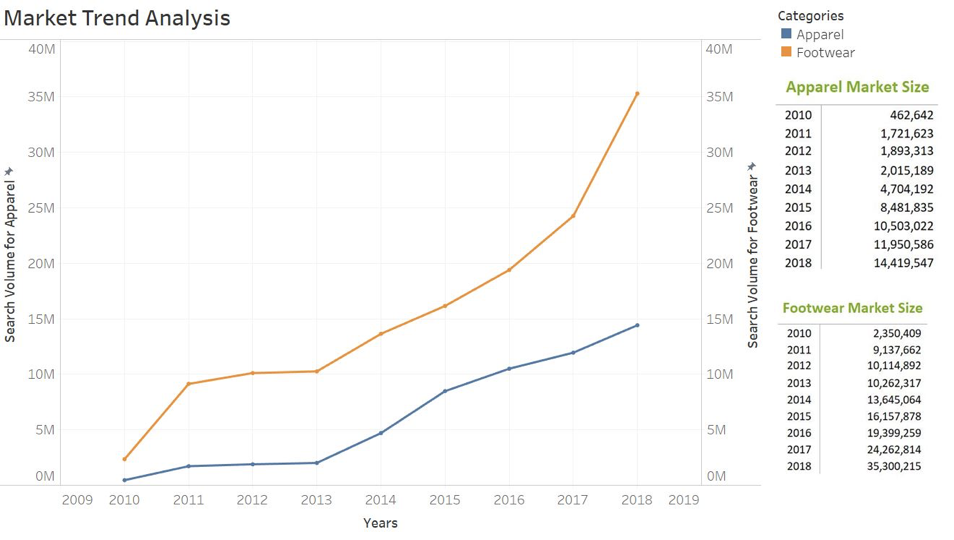
Q3: Why does intent matter?
Intent may seem like a very subjective topic and difficult to determine. However, when it comes to internet searches, you can classify intent into three categories: informational, transactional, and navigational.
“People will want to know if this is the right shoe for them.”
Jordan Koene, CEO of Searchmetrics
Jordan noted that based on his research, he found that people who search for the footwear segment are more interested in informative content about the product than those who are searching the apparel segment.
Key Takeaway:
- Tailor informational content for consumers to improve traffic.
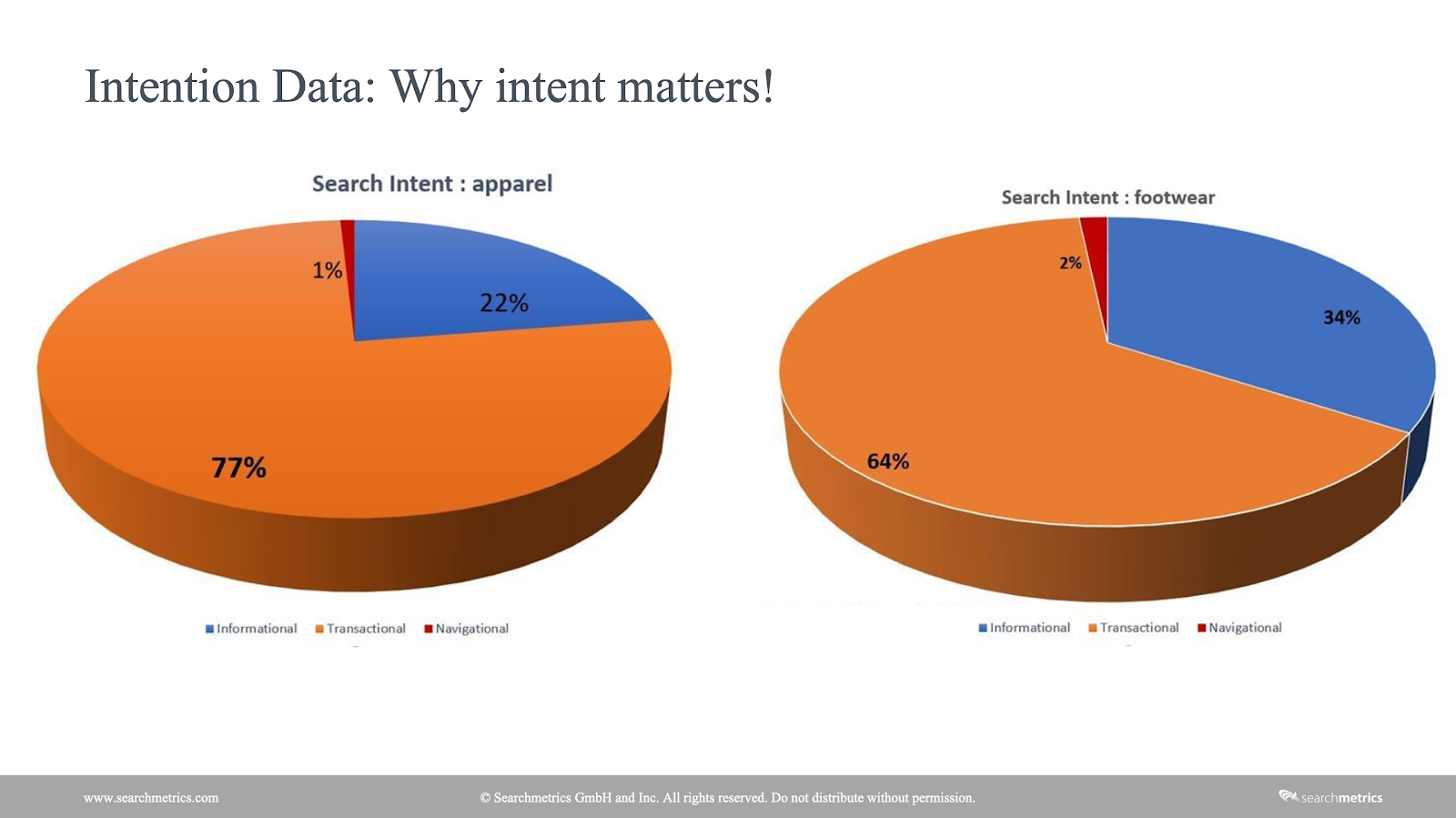
Case in Point:
Nike does an amazing job when it comes to branded content. Nike leverages its branded content into their content strategy to increase its presence. Nike has been able to increase traffic by understanding its buyer’s intentions.
Dick Sporting Goods is another prime example when it comes to excellent branded content. They post numerous articles for a variety of different topics and simultaneously track consumers’ intake of said articles. The data collected can then be used to enhance the comprehension of the searcher’s intent. In other words, once brands understand what their consumers are thinking when they visit their websites, they can create targeted content that will result in higher chances for conversions.
Q4: How do we keep up in a world where Search is changing so fast?
People aren’t clicking on the search page anymore!
“If you want to change behavior, you have to create value.”
Jordan Koene, CEO of Searchmetrics
Jordan noted that there is a trend emerging that searchers are no longer physically clicking on the search results. Websites are now competing for position 0.
- This is due to Google’s new layout which prioritizes rich snippets and rich cards. Jordan explains, “To not lose in the organic search fight is to create value. VALUE! VALUE! VALUE!” In terms of SEO, Google’s algorithms prioritize valuable content.
“Educating consumers to understand what content is valuable would make it easier for the consumer decision-making process.”
Jordan Koene, CEO of Searchmetrics
- A lot of brands are still trying to appeal to the functional phase of the value pyramid when they should be going for the emotional phase. Consumers have more expectations from brands and telling consumers that “these shoes are comfortable” simply won’t cut it anymore.
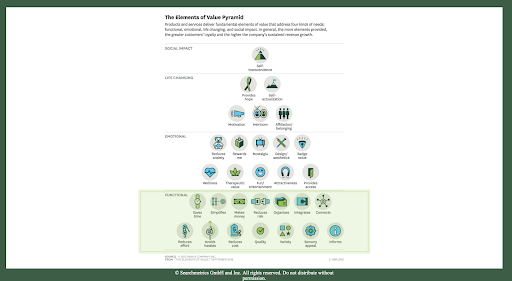
Jordan Koene’s 6 simple steps in Value Creation:
- Develop a clear strategy – Identify the problems you are trying to solve, align business goals, and consider user intent in your content strategy.
- Focus on keeping it simple – Define segments that fit your audience and use data that you can actually process. Don’t just try to replicate what you heard at a conference.
- Ask more questions – Learn more about your audience by asking great questions. Do polls, surveys, social media, reviews, sentiment analyses, and so on.
- Define the data – There are many forms of data, qualitative vs quantitative as an example. Determine what is most useful for your needs.
- Use third-party data – Nothing adds less value than only looking inward. To have a true sense of direction, using third-party, external data is critical. So much of it is free and open!
- Be bold and insightful – If you are giving more than you are receiving, the value would become more apparent!
Ready for more context? Watch Jordan Koene’s full presentation with his voiceover:
The Panel Discussion
After Jordan’s presentation, the panel discussion included Mike King, Jordan Koene, Taylor Cahill, and Christopher Hart. The panel questions were sourced from registered attendees.
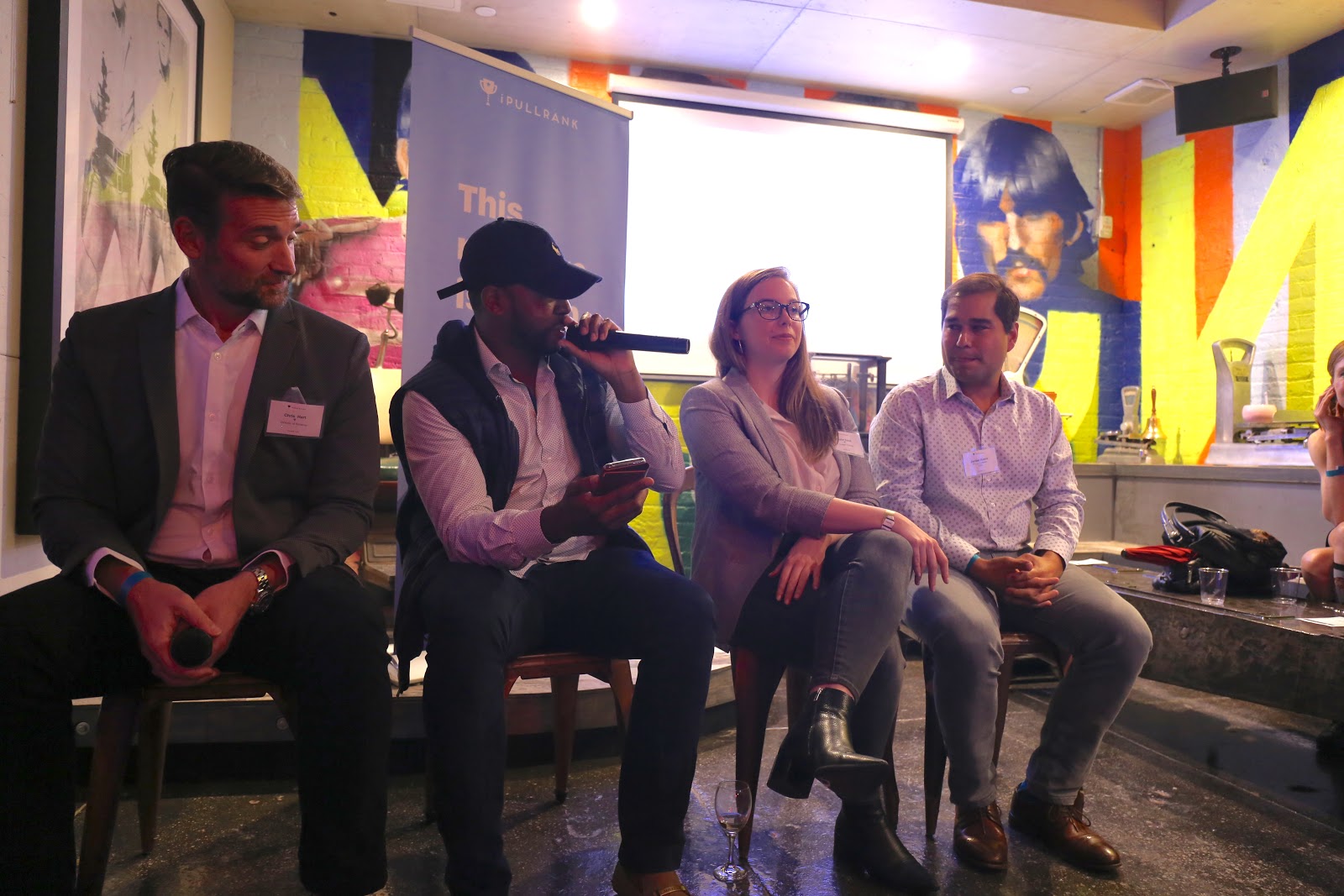
Q1: What are your thoughts on SEO tools that are currently available on the market?
Mike King:
“My thoughts on current SEO tools is that they are not keeping up with the changing landscape. There are a lot of tools where I have to take the data given, and transform the data myself to get the insight that I want. I think that is ridiculous when I have to pay for your tool to do stuff that I then have to do myself, or if your tool shows me data, but doesn’t allow me to export that data to use in other ways. And just thinking about how Google analyzes everything, talking about things like entities, most of the current SEO tools that are available don’t account for that at all.
Obviously, there are some people out there that do a lot of cool things with Python and develop new analyses, which should serve as a benchmark for how SEO tools should be developed. We shouldn’t have to turn to data scientists to get simple insights.”
Q2: How have you seen content strategy evolve/change in the last few years? Do you still feel that content is king?
Taylor Cahill:
“As content becomes more competitive, content strategists have to be more innovative, and as you start developing larger clients, rather than just creating bottom-funnel content around awareness (simple how-to guides), we’re thinking bigger, like creating innovative and interactive strategies that will encourage people to share over time.
Additionally, businesses need to pay a lot more attention to the subsections of their audiences. A lot of times brands are looking at the larger segments of who is coming to your website, but the competitive environment today requires you to dig in and say:
- How can I create targeted content for this one subsection of people buying my product
- How can I connect with them and answer their questions through targeted content that follows Google webmaster’s technical recommendations?
- How do I create a personalized quiz that makes these people feel that we’re paying attention to their needs and providing them with an answer to what they’re REALLY searching for?
By putting all of these things together, you will make searchers feel like we are paying attention to them individually, and that kind of content will build loyalty, it brings people back to your website over and over again until your brand is the first thing on top of their minds and the relationship between brand and consumer will be extremely solid.”
Christopher Hart:
“There is a lot of content about similar topics that are circulating the web, but they aren’t really hitting the bullseye. If you can consolidate that content properly, you get a much bigger bullseye that hits more often.
Content is also in the form of several different things, images, videos, not just words, and content strategists need to think, about where along the funnel is the appropriate type of content needed to convert the user at the most appropriate time. A conversion isn’t always about a click to purchase, a conversion could be about how you change an individual’s opinion from a searcher to a believer, how have you taught them to realize that they want to be a part of the product/service that you provide?
In an age where people have relatively shorter attention spans, content needs to be engaging and videos and images really do help with that. People nowadays usually skim through pages to see if the content that you have fits with what they are searching for, and if you can create an easy-to-read guide to what they are looking for with relevant images or other elements that can make searchers stay longer, then that is a good indication that you have solid content.
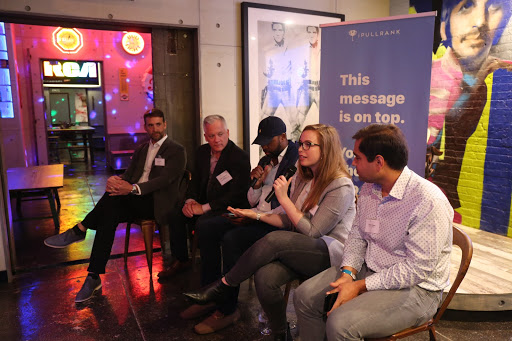
The great content that you create is the kind of content that Google is going to present in the SERPs, and you have to have that content on your site to make people brand-aware, and if people are brand-aware, the next time they need something, they come directly to your site instead of Google, then you’re in it for the long haul.”
Q3: How do we better optimize content with respect to the statistical expectations that Google has? How do we see this become more commonplace? Can we expect more and more SEOs to start doing this?
Jordan Koene:
“I think the challenge is that it’s not just about the SEOs getting their hands on some tools that give more data, it’s actually about how the SEOs communicate with the content team, how does the SEOs convince the merchandising group that their labels are not what searchers are looking for, but they actually need to describe something useful in the page, and that’s the harder job and the part where most of us are not good at, and that is the one challenge that SEOs have.
But if you’re on the content side, you have some ownership in the content process, opening your mind to a very different approach is very crucial, pick an approach that isn’t dictated by history. There is a lot of predicated history in the content space, and people want to do what was always done. Having different directions to follow in regards to content creation is what matters and people with strong SEO backgrounds should make sure that they also have a strong content strategist in your team.”
Q4: Nowadays, companies are leveraging natural language processing heavily and there is a lot of innovation in this space. I’m curious about your perspective. Where do you think this space is moving towards? Where is the future of content creation going?
Taylor Cahill:
“The innovation in natural language processing is to help remove risk from the content creation process. Identifying the right keywords would improve results through rank, but it is more beneficial by talking about the right things.
Don’t give content that isn’t accurate and reliable. We also don’t talk about different approaches that will help to solve it. Different approaches can help us understand what users want in their experience and provide measurable results.
For example, Nike wants to sell more white sneakers and would create the content “How to clean white shoes” to spread awareness about white sneakers. If a reader were to be on Nike’s branded content and decided that they want white sneakers, they can browse through Nike from the branded content to develop a buyer’s interest.
Content nowadays is much more holistic, you can’t just be a product company selling a product to a person, You have to be “authentic” and build a relationship with the highest level keywords that you can find.”

Q5: How do you add more value to a company that has an SEO team that knows what they’re doing?
Mike King:
“There are a lot of companies out there with great SEO teams, and the key is to identify things that you can do that they can’t. For example, let’s say you’re pitching to a company, and they have a sophisticated SEO team, they might not want best-practice SEO, but they might not have as much experience in experimentation or A/B testing as we do, so that is going to be the core benefit that we are going to offer them. Just ask the question, “what is it that we’re good at what they don’t know much about” and narrow the scope from there.
Q6: Going back to establishing E-A-T, how do regular drug company websites compete with the WebMDs and the drug.coms of the internet? How can you establish yourself as an authority?
Jordan Koene:
“There are two directions you can take, the first one is a partnership. You have to have partnerships that create credibility, you have to create tons of value-add for Google, and by finding authoritative partners, it creates a deeper footprint for you in the SERPs because you are now present on other sites through partnership.
The second direction and this is the harder one, is to pool a community, getting other people on the website to contribute. A contribution can come in a variety of different forms and shapes, it doesn’t necessarily have to be people writing articles on that website. There are other ways that you can get doctors and experts to put their stamp of approval on those websites, and that may be good enough for Google.”
Sign up for our newsletter for invitations to our next events and blog updates! We are PROUD to host more events like this in the future.
Key Contributors: Kevin Kuo, Felix Chen, John Constantine


